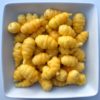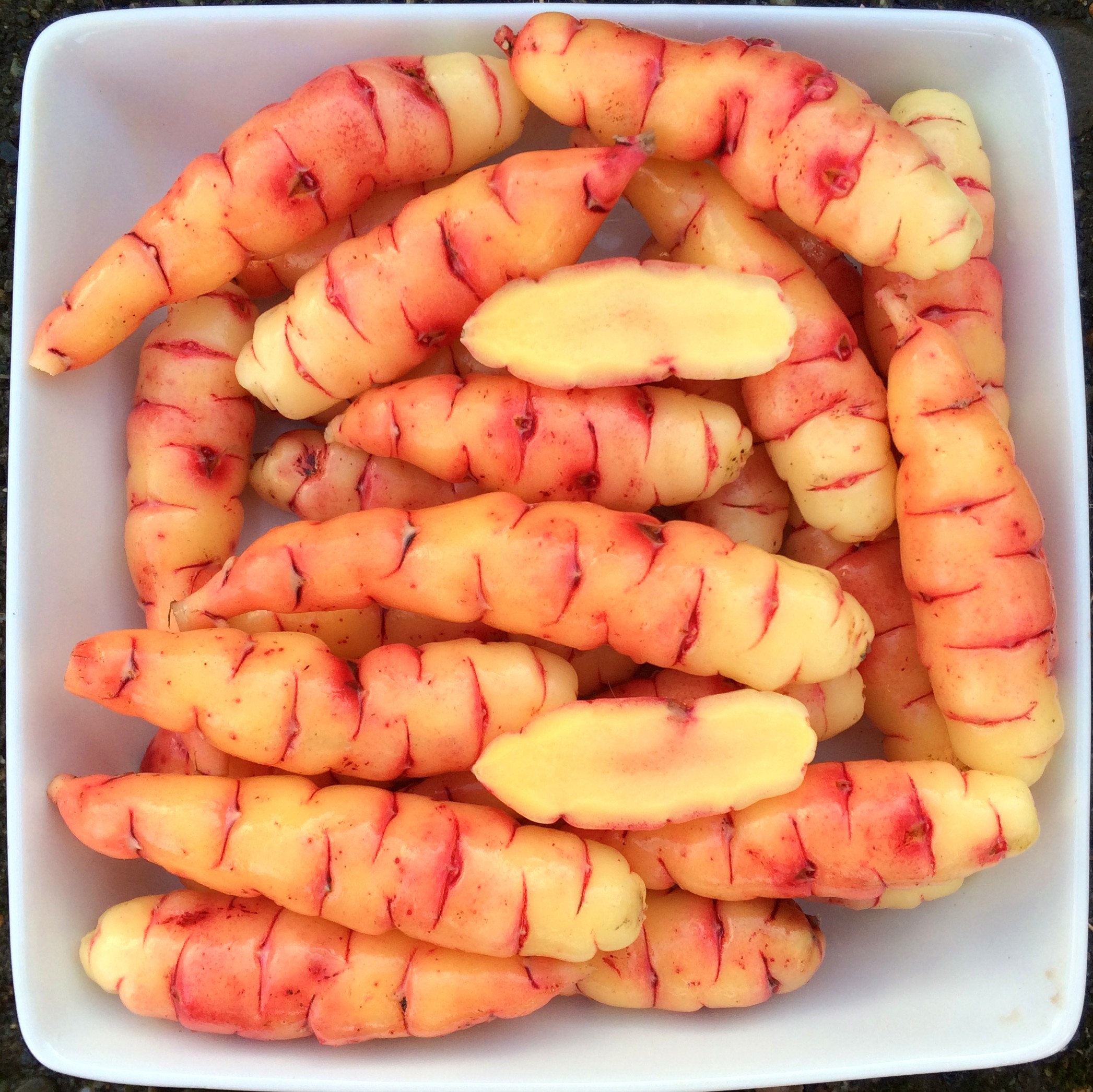| Oca information and growing instructions |
Apilla is an heirloom variety originally from Cochabamba, Bolivia. The name is somewhat redundant name as it is simply the Aymara word for oca, but I generally don’t rename varieties unless there are duplicates, since that gets confusing quickly.
Culinary Traits
Apilla is a slightly tart variety with a soft consistency when cooked. It will substitute easily into potato recipes. It isn’t tart enough to be particularly appealing for eating raw. Like most varieties, Apilla loses most of its color when cooked, becoming light yellow inside and out.
Agronomic Traits
Apilla plants are moderate in height and remain relatively compact at maturity. Tubers are produced on stolons of intermediate length, which prevents crowding, resulting in regular shapes. Tuberization photoperiod is about 12.5 hours, a week earlier than most heirloom varieties. Average yield is 1.6 pounds. The maximum tuber length is 5.0 inches and the average tuber length is 2.1 inches. Average tuber count is 35. There are about twice as many small tubers as large with this variety. This variety has relatively low tuber dormancy and is among the first varieties to begin sprouting, usually in February here.
Apilla is a moderate flowerer with a mid-styled flower, flowering here in August and September.
What you will receive
Tubers
You will receive the stated number of tubers, packaged in a wax envelope. We grade tubers by passing them through a grate. Small tubers are those that won’t fall through a 1/3″ grate, but that will fall through a 1 inch grate. Medium/large tubers are those that will not fall through a 1 inch grate.
Seeds
Seeds are open pollinated. Because oca is a polyploid hybrid, the seeds will not grow true to type. They are suitable for use in breeding or conservation efforts and could be used to select varieties similar to the parent type.
| Weight | 0.1 lbs |
|---|---|
| Dimensions | 4 × 2 × 1 in |
| Tuber Size | |
| True Breeding | |
| Availability | |
| Origin | |
| Licensing | |
| Yield | |
| Skin Color | |
| Flesh Color | |
| Flowering | |
| Last Regen | |
| Climate | Marine West Coast (PNW), Mediterranean (CA), Warm Humid Continental (NE/Canada) |
| Tuber Initiation | |
| Product Type | |
| Best Uses | |
| Flower Type |
Only logged in customers who have purchased this product may leave a review.




Reviews
There are no reviews yet.